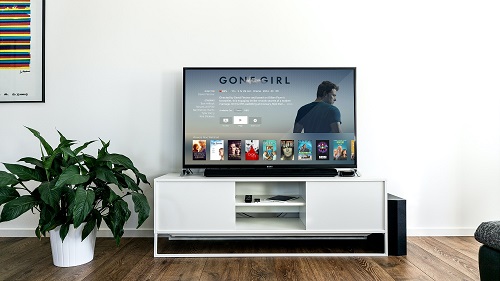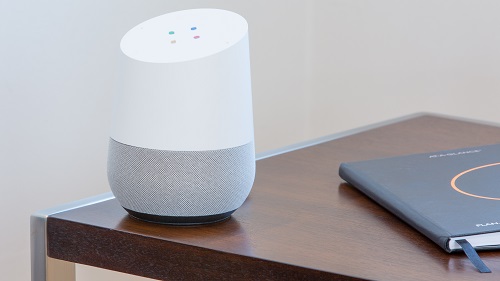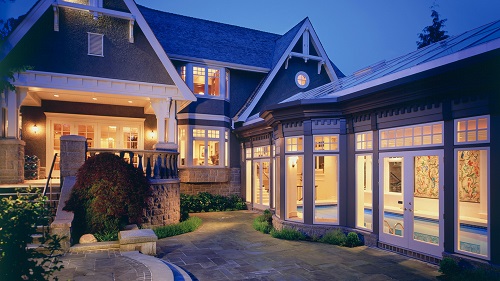The Brainy Home, where cutting-edge technology meets intelligent automation! In this exciting era of innovation, our houses are no longer just four walls and a roof. They have evolved into living spaces that possess a mind of their own – homes that can think, learn, and adapt to our needs.
Imagine walking into a home that anticipates your every desire: lights brightening as you step through the door, soothing music playing in sync with your mood, and the perfect temperature enveloping you like a gentle embrace. This is the magic of intelligent home automation – an interconnected network of devices working harmoniously to create an environment tailored specifically for you.
But how does it all work? What lies beneath the sleek surfaces and seamless interactions? Join us as we unravel the science behind these brainy abodes, delving into the fascinating world of sensors, actuators, hubs, controllers, machine learning algorithms – all working together to transform your house into a truly smart home. So let’s dive right in and unlock the secrets behind this technological marvel!
The Nervous System: Understanding the Core of Home Automation
At the heart of intelligent home automation lies its nervous system – the intricate network of interconnected devices that enable seamless communication and coordination. Just like our own central nervous system, this network allows various components to work together harmoniously, responding to our needs in real-time.
Sensors play a crucial role in this ecosystem by acting as the senses of your smart home. They gather data from their surroundings, detecting changes in temperature, light levels, motion, and more. These small but mighty devices provide valuable information that helps automate different aspects of your home.
But what good are senses without muscles? Actuators step up to the plate by executing commands based on the information received from sensors. Whether it’s adjusting lighting levels, turning on appliances or unlocking doors – actuators bring life to your smart home’s actions.
To coordinate these diverse devices seamlessly and intelligently, hubs and controllers serve as the central command center. These powerful brains receive input from sensors and dictate commands to actuators with lightning speed. Their ability to integrate multiple protocols ensures compatibility among various devices within your smart home ecosystem.
As technology advances further into artificial intelligence (AI), machine learning algorithms become an integral part of our brainy homes. By analyzing data patterns over time, AI-powered systems can learn user preferences and make informed decisions autonomously. This means your smart home becomes even better at predicting your needs before you even realize them!
The future prospects for AI-driven intelligent homes are incredibly exciting! Imagine a world where voice assistants understand not just what we say but also how we feel through sentiment analysis algorithms or homes that proactively adjust energy usage based on weather forecasts – all thanks to advancements in AI technology.
Intrigued yet? The brainy revolution is well underway! Stay tuned as we delve deeper into each aspect of intelligent home automation – unveiling fascinating insights behind every component that transforms houses into living spaces brimming with intelligence!
Sensors and Actuators: The Senses and Muscles of Your Smart Home
Sensors and actuators are the unsung heroes of your smart home. These components work together to give your house its senses and muscles, allowing it to respond intelligently to your needs.
Imagine walking into a room and the lights automatically turn on. This is made possible by motion sensors that detect your presence and send signals to the lighting system. It’s like having an extra pair of eyes that can anticipate your every move.
But it doesn’t stop there. Temperature sensors ensure optimal comfort by adjusting the thermostat based on real-time data. They keep you cozy in winter and cool in summer without any effort on your part.
Actuators, on the other hand, are like the muscles of your smart home. They bring life to automation by physically carrying out tasks triggered by sensors or commands from hubs or controllers.
For example, motorized blinds can open or close depending on the time of day or sunlight intensity detected by light sensors. Smart locks use actuators to unlock or lock doors remotely, providing convenience and peace of mind.
These sensor-actuator duos form a powerful partnership that enables seamless integration between humans and technology within our homes. With their help, everyday tasks become effortless as our houses adapt effortlessly to our preferences and needs
The Central Command: How Hubs and Controllers Coordinate Devices
Smart home devices are becoming increasingly popular, and with good reason. They offer convenience, energy efficiency, and enhanced security. But have you ever wondered how all these devices communicate and work together seamlessly? That’s where hubs and controllers come into play.
Hubs and controllers serve as the central command of your smart home ecosystem. These devices act as a bridge between different smart devices, allowing them to communicate with each other. Think of them as the conductor of an orchestra, ensuring that every instrument plays in harmony.
So how do hubs and controllers coordinate all these diverse devices? Well, they use various communication protocols such as Wi-Fi, Bluetooth, Zigbee or Z-Wave to connect to different smart devices like thermostats, light bulbs, cameras etc. This allows for seamless integration across different brands and technologies.
Once connected to the hub or controller, the individual smart devices can then be controlled through a centralized app on your smartphone or tablet. This means you can adjust your thermostat settings while away from home or turn off lights in multiple rooms with just a tap on your device.
But it doesn’t stop there! Hubs and controllers also make automation possible by creating routines or scenes that trigger specific actions based on certain conditions. For example, you can set up a “Good Morning” scene that automatically turns on your coffee maker when you wake up or opens the blinds at sunrise.
The advancements in technology have led to smarter hubs and controllers that utilize artificial intelligence (AI) algorithms to learn user preferences over time. These intelligent systems can anticipate our needs by analyzing data from various sensors throughout our homes.
In addition to their coordination capabilities within our homes’ ecosystems today; future prospects for hubs and controllers look promising too! As AI continues to evolve rapidly; we will soon see even more sophisticated systems capable of interpreting complex user patterns; making decisions without human intervention!
So next time you enjoy the convenience of controlling multiple aspects of your home with just a few taps on your smartphone; remember to thank the hubs and controllers that make
Machine Learning: The Brainpower behind Smart Home Decision-making
When it comes to smart home automation, one of the most fascinating aspects is machine learning. This cutting-edge technology allows your home to make intelligent decisions based on patterns and data analysis.
Machine learning algorithms enable your devices to understand and adapt to your preferences over time. They can learn when you typically wake up or come back from work, adjusting temperature settings accordingly. Imagine waking up every morning to a perfectly warmed-up house, without even having to touch a thermostat!
These algorithms also play a crucial role in energy management. By analyzing usage patterns and optimizing energy consumption, smart homes can help reduce utility bills while minimizing environmental impact.
Moreover, machine learning enhances security systems by continuously learning about potential threats. Whether it’s recognizing unfamiliar faces or detecting unusual activity patterns, these algorithms give you peace of mind knowing that your home is always protected.
Another exciting application of machine learning in smart homes is voice recognition technology. Through natural language processing capabilities, virtual assistants like Alexa or Google Assistant can understand and respond accurately to your commands.
As the field of artificial intelligence advances further, we can expect even more sophisticated applications for machine learning in our homes. From personalized lighting schemes that adjust according to mood and time of day to predictive maintenance for appliances – the possibilities are endless!
With each passing day, our homes are becoming smarter thanks to the brainpower of machine learning algorithms. So sit back and let your intelligent abode take care of all those mundane tasks – after all, who doesn’t want a little extra free time?
Future Prospects: The Exciting Frontier of AI and Home Automation
The future prospects of AI and home automation are truly exhilarating. As technology continues to advance at a rapid pace, we can expect even more intelligent and intuitive smart homes in the coming years.
One exciting area of development is the integration of artificial intelligence into home automation systems. AI algorithms have the potential to learn from our behaviors, preferences, and daily routines, allowing them to make decisions and adjustments that align with our unique needs. Imagine a home that knows exactly when you like your coffee brewed or your lights dimmed for movie night without you having to lift a finger.
Another promising frontier is voice control technology. With virtual assistants becoming increasingly popular, it’s not hard to envision a future where every aspect of our smart homes can be controlled through natural language commands. From adjusting the thermostat to locking doors or even ordering groceries online, voice control has the potential to revolutionize how we interact with our living spaces.
Furthermore, advancements in machine learning will enable smart homes to become more proactive rather than reactive. Rather than simply responding to predefined triggers or commands, these systems will anticipate our needs based on patterns and trends they’ve learned over time. They’ll automatically adjust lighting levels based on occupancy or optimize energy usage during low-demand periods – all while continuously adapting their behavior according to evolving user preferences.
As we look ahead, there’s no doubt that AI-driven home automation holds immense promise for creating smarter and more efficient living environments. However, it’s essential that we also consider important ethical considerations such as data privacy and security as these technologies become further integrated into our everyday lives.
In conclusion, the brainy home is here today but still evolving rapidly tomorrow! With ever-advancing technologies like sensors, actuators, hubs/controllers coupled with powerful machine learning algorithms—our dream of seamlessly interconnected intelligent homes is fast becoming a reality. So buckle up because the future promises an incredible journey filled with endless possibilities for making our lives easier and more comfortable in the smart homes of tomorrow.







